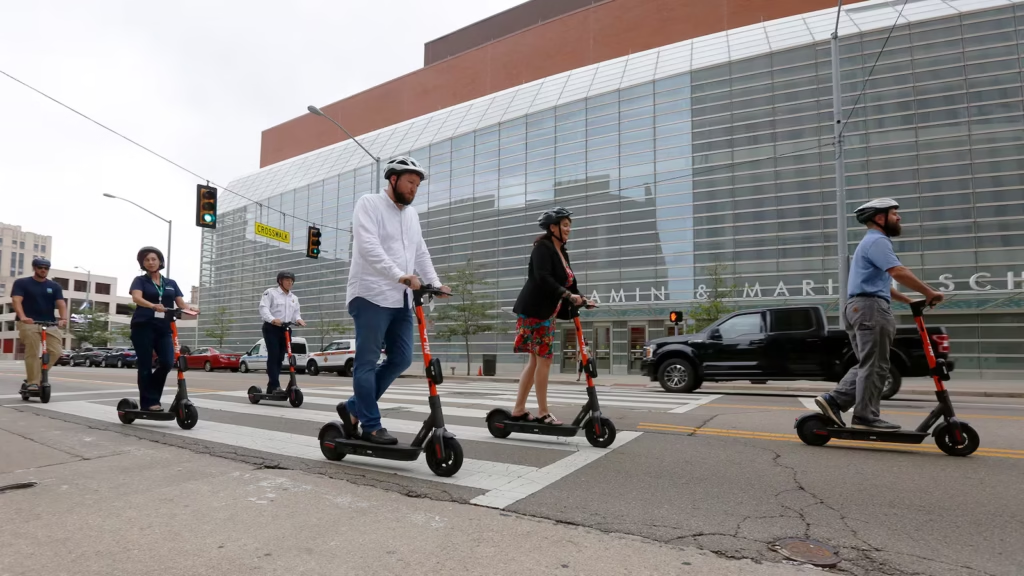Electric scooters have quickly become a go-to choice for urban transportation. They are fast, eco-friendly, and convenient. But one question many riders have is: can you ride an electric scooter in the rain? The short answer is yes—but with some important precautions. In this guide, we’ll walk you through everything you need to know about riding safely in wet conditions, including safety tips, potential risks, and how to protect your scooter.
Is It Safe to Ride an Electric Scooter in the Rain?
Riding in the rain is possible, but it comes with a few risks. Wet surfaces reduce traction, which can lead to slips or longer stopping distances. Electronics and water generally don’t mix well, so exposure to rain could also damage your scooter’s electrical system—especially if it lacks proper waterproofing.
However, many modern electric scooters are designed with water resistance in mind. For instance, the maxshot v1 electric scooter comes with a water-resistant build, making it a more suitable option for rainy-day rides compared to other models that lack this feature.
If you plan to use your scooter as a daily commuter, it’s worth checking the Ingress Protection (IP) rating. An IP rating of IP54 or higher means your scooter can handle light rain and splashes, but not deep puddles or heavy downpours.
What is an IP Rating?
IP ratings measure how well a device is protected against dust and water. The first digit refers to dust protection, and the second digit refers to water resistance. For example:
- IPX4: Protected against water splashes from any direction
- IP54: Offers dust protection and resists water splashes
- IP65: More resistant to water jets and dust
Understanding the IP rating of your scooter helps you make informed decisions when the weather turns bad.
Tips for Riding in the Rain
Here are some essential tips to keep you safe and protect your scooter when riding in the rain:
1. Slow Down
Wet roads reduce tire grip, which means it’s easier to lose control. Reducing your speed gives you more time to react to obstacles or slippery spots.
2. Use Proper Tires
Some electric scooters come with slick tires, which are not ideal for wet conditions. Pneumatic (air-filled) tires with good tread provide better grip. If your scooter allows tire upgrades, consider switching to rain-friendly tires for safer commuting.
3. Avoid Puddles
Puddles can hide potholes or other obstacles that could damage your scooter or cause a fall. Plus, going through deep water can allow moisture to reach internal electronic components.
4. Brake Early and Gently
Braking distances are longer in the rain. Apply brakes gradually to prevent skidding. Avoid sudden stops, especially when turning.
5. Stay Visible
Rain reduces visibility for everyone on the road. Make yourself more noticeable with reflective clothing, bright colors, and functional scooter lights. If your scooter doesn’t come with built-in lights, you can add aftermarket lights for safety.
6. Wear Waterproof Gear
Staying dry helps you stay focused. Waterproof jackets, pants, and gloves will keep you comfortable. Consider wearing a helmet with a clear visor to keep rain out of your eyes.
7. Protect Your Scooter
You can add extra protection to your scooter by installing a mudguard or waterproof covering for the display. Some riders also use silicone sealants on exposed electrical parts for added protection. Always dry your scooter after each wet ride to prevent long-term damage.
What Not to Do in the Rain
Avoid these common mistakes to stay safe:
- Don’t charge a wet scooter: Water and electricity don’t mix. Always dry your scooter thoroughly before charging.
- Don’t ride during thunderstorms: Lightning and heavy rain present too many risks. Wait until the weather clears up.
- Don’t assume all scooters are waterproof: Many scooters can’t handle water. Always check the IP rating before riding in the rain.
Maintenance After a Rainy Ride
After riding in wet weather, take a few steps to keep your scooter in top shape:
- Dry the scooter thoroughly using a soft towel. Pay special attention to the battery area and joints.
- Inspect the tires for embedded debris like small stones or glass.
- Lubricate the moving parts to prevent rust, especially if your scooter has a folding mechanism.
- Check the brakes to make sure they haven’t worn down due to wet conditions.
Choosing a Rain-Ready Scooter
If you live in a rainy climate or plan to ride in all weather conditions, choose a scooter designed to handle wet roads. Look for models with:
- High IP rating (IP54 or above)
- Pneumatic tires with tread
- Waterproof display and battery compartments
- Bright built-in lights
The maxshot v1 electric scooter is a solid choice for rainy rides. It offers a combination of water resistance, strong tires, and durable build quality—making it reliable even when the weather is less than perfect.
Riding an electric scooter in the rain is possible, but you must take extra precautions to stay safe and protect your ride. Understanding your scooter’s capabilities, wearing the right gear, and practicing safe riding habits go a long way in ensuring a smooth trip.
Always remember that not all scooters are built for wet conditions. If you expect to face rain regularly, choosing a well-designed model like the maxshot v1 electric scooter will give you more peace of mind and better performance.

